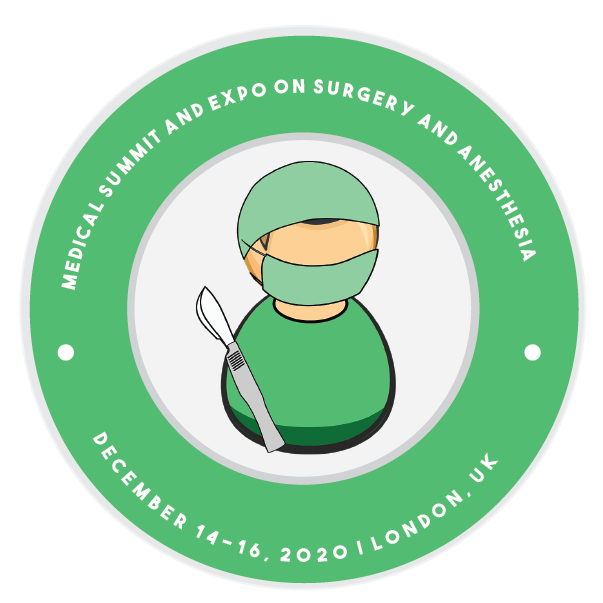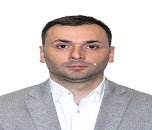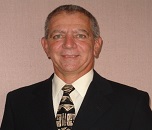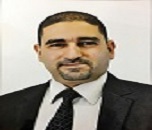Renowned Speakers
We’ve invited the top most influential speakers from around the world to give inspirational talks and lead practical workshops.
Conference Information
About Conference
PULSUS invites all the participants across the world to attend Medical Summit and Expo on Surgery and Anesthesia to be held during December 14-16, 2020 at London, UK which includes Prompt keynote presentations, Oral talks, Poster presentations, and Exhibitions.
Surgery congress 2020 delighted to welcome all the interested and enthusiastic participants across the globe to its prestigious world Surgery congress which is going to be held during December 14-16, 2020 at London, UK highlights the theme “Exploring Perspective in the field of Surgery”. Surgery Congress 2020 is a three-day conference concentrating on Interactive Sessions & Sub-sessions emphasized on innovation and new trends on surgery, keynote lectures from Senior Scientists and industry experts, panel discussions, poster competitions, and Young Researcher Forum. The conference program will feature well-known and thought-provoking speakers to interactive discussion sessions.
Young Research Forum
Award for Young Research’s at Surgery Congress 2020 - Exploring the Perspective in the field of Surgery
Pulsus Conference- Surgery Series is glad to announce “Medical Summit and Expo on Surgery and Anesthesia” on December 14-16, 2020 in London, UK
Surgery Congress 2020 Young Scientist Awards:
Surgery Conference Committee is intended to honour prestigious award for talented Young researchers, Young Investigators, scientists, Post-doctoral fellows, Post-Graduate students, Trainees, Junior faculty in recognition of their outstanding contribution towards the conference theme. The Young Scientist Awards make every effort in providing a strong professional development opportunity for early career academicians by meeting experts to exchange and share their experiences on all aspects of Surgery and Anesthesia.
Young Research’s Awards at Surgery Congress 2020 for the Nomination: Young Researcher Forum - Outstanding Masters/Ph.D./Post Doctorate thesis work Presentation, only 25 presentations acceptable at the Surgery Congress 2020 young research forum.
For guidelines and eligibility, please visit Young Scientist Award
Sessions/Tracks
Target Audience:
- Doctors
- Surgeons
- Anaesthesiologists
- Medical Professionals
- Residents
- Fellowship Holders
- Medical Students
- Nurses
- Surgical tool technicians
- Pharmaceutical Industries
Why to attend??
The Surgery conference interacts with members across the globe focused on learning about surgical and its specialties. This is the single best opportunity to reach the largest participants. Sharing the knowledge and demonstrations, information and B2B meetings with industrialists and potential clients to make a splash with innovative products live and brand recognition at this event. World-renowned speakers, the most recent techniques, and the latest updates in Surgery are hallmarks of this conference.
Session 1: General Surgery and its Specialties
General surgery is a specialty to fame in surgical techniques that principally concentrates on stomach area including stomach, throat, colon, gut, pancreas, liver, gallbladder, and regularly the thyroid organ. General surgery likewise manages ailments like skin, bosom, injury, delicate tissue, hernias, and vascular surgery. surgery methods like Laparoscopic surgery is major and as a significant expertise that is creating a surgical methodology and. Operations are done by negligibly obtrusive systems to diminish the torment to patients, furthermore to better recuperation. Each stomach operation has been finished by this general surgery. For example, morbid obesity, evacuation of threatening tumors of the entrails and hernia repair.
- Trauma Surgery/Surgical Critical Care
- Laparoscopic Surgery
- Colorectal Surgery
- Breast Surgery
- Vascular Surgery
- Endocrine Surgery
- Transplant Surgery
- Surgical Oncology
- Cardiothoracic Surgery
- Pediatric Surgery
- Podiatry Surgery
General Surgery Related Societies/Associations: European Surgical Association, European Society for Vascular Surgery, ESTS - European Society of Thoracic Surgeons, European Society for Trauma and Emergency Surgery, Society of Laparoendoscopic Surgeons, European Society of Surgical Oncology, European Society Of Surgery, Asian Surgical Association, Society of Asian Academic surgeons, Asia Pacific Spine Society (APSS) , American Society of colon and rectal surgeons, Asia Pacific Society of Ophthalmic Plastic & Reconstructive Surgery, The Society of Thoracic Surgeons, Asian Association of Oral and Maxillofacial Surgeons (Asian AOMS).
Session 2: Otorhinolaryngology Surgery
Otorhinolaryngology is a surgical subspecialty in medicine that contracts with conditions of the ear, nose, and throat and connected structures of the head and neck. Oto means ears; rhino denotes nose, and larynx direct as the throat, denoting the larynx includes surgical intervention for operations and illnesses in the head and neck regions. The operation to the ears, nose, and throat, in the head and neck region, is to treat atypical defects. To correct hearing impairment defects such procedures contain stapedotomy, technique which removes all or part of a bone in themiddleear. Tympanoplasty isrebuildingoftheeardrum. Cochlear implants defined as the establishment of a device to motivate nerve ends within the inner portion of the ear to permit hearing.
- Head and Neck Oncology
- Otology and Neurotology
- Rhinology
- Pediatric Otorhinolaryngology
- Laryngology
- Facial Plastic and Reconstructive Surgery
- Etymology
Otorhinolaryngology Surgery Related Societies/Associations: Congenital Heart Surgeons Society, British Obesity & Metabolic Surgery Society, The Rhinoplasty Society, The European Society for the GI Surgeon, European Board of Plastic Reconstructive and Aesthetic surgery, British Association of Oral Surgeons, European Journal of Trauma and Emergency Surgery.
Session 3: Ophthalmic Surgery
Ophthalmic surgery, well-known as ocular surgery, which is surgery performed on the eye. Laser eye surgery or laser corneal surgery is the process accomplished by the spending of the laser on the surface of the eye. This procedure is implemented to treat the conditions like myopia, hyper metopic and astigmatism. Glaucoma means increased pressure in eye or nerves system present in the eye which leads to loss of eyesight and this is well recognized as increased intro-ocular pressure. Ophthalmologist is a specialist in treating all eye problems. An ophthalmologist makes surgeries on eyes, and numerous complaints can be identified by ophthalmologists. Canaloplasty is a method performed by the non-penetrating procedure to improve drainage from the eyes. Anterior vasectomy is the removal of the front part of the eye to a reduction of intraocular pressure which can be used for treating vitreous loss during or corneal cataract surgery.
- Cataract Surgery
- Glaucoma Surgery
- Laser eye Surgery
- Ma Surgery
- Canaloplasty
- Refractive Surgery
- Corneal Surgery
- Vitreo-retinal Surgery
- Eye muscle Surgery
- Oculoplastic Surgery
- Eyelid Surgery
- Orbital Surgery
- Other Oculoplastic Surgery
- Surgery involving the lacrimal apparatus
- Eye removal
Ophthalmic Surgery Related Societies/Associations: American Society of Retina Specialists, Retinal American Academy of Ophthalmology, Optometric Retina Society, Pan America Glaucoma Society, American Glaucoma Society, European Society of retinal specialists, European Vitreoretinal Society, European Glaucoma Society, European Society of cataract and refractive surgeons, European Mucosal Immunology Group, Japanese society of Cataract and Refractive Surgeons, Asia Pacific Vitro retinalSocieties , Asia Cornea Society, Afro-Asian Council of Ophthalmology , Asian Angle-Closure Glaucoma Club.
Session 4: Oral & Maxillofacial Surgery (OMS)
Oral and Maxillofacial surgery treating numerous syndromes, diseases and defects in the face, jaws, head, neck and the hard and soft tissues of the facial and oral region. Oral and maxillofacial surgery is a major surgical specialty. Central Treatments performed on the craniomaxillofacial regions such as the mouth, jaws, face, neck, skull, and include Dental surgery. Surgery to insert Osseointegrated implants to cure dental problems and implants to treat maxillofacial region, also to treat head and neck region cosmetic surgery is the satisfactory option. Various surgeries performed on the craniomaxillofacial area: mouth, jaws, face, neck, skull, and include-dental surgery, surgery of the neck and head, surgery for repairing or Corrective jaw, surgical for sleep complaints, maxillomandibular treatment, and genioplasty.
- Head and Neck Cancer ( Micro Vascular Reconstruction)
- Cosmetic Facial Surgery
- Craniofacial Surgery/Paediatric Maxillofacial Surgery/Cleft Surgery
- Cranio-Maxillofacial Trauma
- Head and Neck Reconstruction (Plastic Surgery of the head and neck region)
- Maxillofacial Regeneration
- Facial Trauma
- Major and Minor Bone Grafting
- Pre-Prosthetic Surgery
- Cleft Lip & Palate Surgery
- Orthodontics and Apicoectomy
- Tympanoplasty
- Dentialveolar Surgery
- Corrective Jaw Surgery
Oral and Maxillofacial Surgery Related Societies/Associations: Japan Dental Association, Philippine Dental Association, Saudi Dental Society, Australian Dental Association, Singapore Dental Association, British Dental Association, Association Dentaire Française, Irish Dental Association, Bulgarian Dental Association, Hungarian Society of Periodontology, American Dental Association, Florida Dental Association, New York State Dental Foundation, Ohio Dental Association, California Dental Hygienists Association, Virginia Dental Hygienists Association.
Session 5: Endocrine Surgery
Endocrine surgery is a specialized field of surgery that focuses on the treating of problems of the thyroid, parathyroid, and adrenal glands, as well as endocrine carcinomas of the gastrointestinal tract and the pancreas. Endocrine surgery can be performed on endocrine glands to treat a hormonal or anti-hormonal effect in the human body. This involves surgery to eliminate carcinomas which have developed within or on endocrine gland. The method of operation through endoscopic technique is denoted as endonasal surgery. The endocrine operation typically involves the parathyroid glands thyroid gland and adrenal glands. The most common endocrine surgeries will include the elimination of the thyroid, and then after followed by parathyroid gland removal.
- Thyroid Surgery
- Parathyroid Surgery
- Adrenal Surgery
- Pancreatic Surgery
- Minimally Invasive Parathyroidectomy
- Resection of Substernal Goitre
- Total Thyroidectomy
- Retroperitoneoscopic Adrenalectomy
EndocrineSurgery Societies/Associations: EuropeanSurgicalAssociation, European Society for Vascular Surgery, ESTS - European Society of Thoracic Surgeons, European Society for Trauma and Emergency Surgery, Society of Laparoendoscopic Surgeons, European Society of Surgical Oncology, European Society Of Surgery, Congenital Heart Surgeons Society, British Obesity & Metabolic Surgery Society, The Rhinoplasty Society.
Session 6: Cardiothoracic Surgery
Cardiothoracic surgery is the arena of medicine involved in surgical treatment of organs inside the chest generally dealing with conditions of the heart and lungs. Cardiac surgery and thoracic surgery are separate operating specialties. Cardiovascular surgery is operation on the heart done by cardiac specialists. Normally, it is done to treat complications of the ischemic disease, correct congenital heart disease, or treat valvular heart disease from various causes including, rheumatic heart disease, atherosclerosis, and endocarditis. Heart transplantation also comes under this category. Cardiothoracic surgery is the operating procedure to treat organs inside the thoracic cavity. Cardiac operation and thoracic operation are separate surgical specialties. Bi-pass heart surgery is an operating procedure in which heart is opened and operation is performed on the internal constructions of the heart. In minimally invasive surgery machine is used to perform the operation.
- Aortic and Peripheral vascular and Endovascular procedures
- Paediatric and Neonatal Cardiac Surgery
- Minimally invasive and Hybrid Cardiac procedures
- Robotic Cardiac Surgery
- Off-Pump Coronary Revascularization vs. Conventional CABG vs. PTCA
- Valve repair/Replacement/Mechanical vs. Tissue valves and TAVI/TAVR
- Cardiac disease prevention and Rehabilitation
- CPB and Perfusion Technology
- Thoracic and VATS
- Cardiac Anaesthesiology and Intensive Care
CardiothoracicSurgeryRelatedSocieties/Associations: Heart Rhythm Scientific Sessions, American Cardiology Association, World Congress on Heart Failure, The European society of cardiology, Asian Pacific Society of Cardiology, Japanese Circulation Society, Cardiac Society of Australia & NewZealand, The Japanese HeartFailure Society, Japanese Society of Echocardiography,The World Society of Cardiovascular & Thoracic Surgeons, Asian Pacific Society of Hypertension, Association of Cardiologists of Kazakhstan, Australian Cardiovascular Health and Rehabilitation Association, Association of Thoracic and Cardiovascular Surgeons of Asia, Chinese Society of Cardiology, Philippine Heart Association.
Session 7: Transplantation Surgery
Transplantation surgery is a surgical system in a human in which a body tissue or organ is exchanged from a giver to a beneficiary or starting with one a part in the body then onto the next. Organs that can be transplanted are the kidneys, liver, heart, lungs, pancreas, digestive tract, and thymus. Sorts of transplantation surgery include Xenograft and xenotransplantation. Organ givers might live, mind dead, or dead through circulatory demise. Tissue might be recuperated from givers who pass on of circulatory demise, and of mind passing up to 24 hours past the end of the pulse. Not at all like organs, most tissues can be protected and saved up to five years, which means they can be "banked". Transplantation raises various bioethical issues, including the meaning of death, how to and when the transplantation should be done.
- Xenograft and Xenotransplantation
- Domino Transplants
- ABO-incompatible Transplants
- Transplantation in obese individuals
- Autograft, Allograft, Isograph, and Xenograft
- Split transplants and its Complications
- Domino Transplant
- Challenges of transplantation in obese individuals
- Amputation and Emergency Surgeries
- Knee Replacement Surgery
- Allograft and All Transplantation
- Split Transplantation Surgery
- Organ Transplantation Surgery
- Heart Transplantation
Transplantation Surgery Related Societies/Associations: American Society of Transplant Surgeons, American shoulder and Elbow Surgeons, Peripheral Vascular Surgery Society, Society of United States Air Force Flight Surgeons, American Society of Plastic Surgeons, American Association for Hand Surgery.
Session 8: Obstetrics and Gynaecological Surgery
Gynecological surgery may generally be done for cosmetic or elective purposes. Generally, gynec operational and surgeries Include Endometrial Biopsy and Uterine. Women who have pelvic floor conditions are diagnosed by the team of Urogynecologists. Noncancerous gynaecologic complaints like heavy menstrual periods are identified by Gynaecologists skilled in minimally invasive Gynecologic operations. Gynecologic oncologist analysis and conduct of women's cancers, like uterine, cervical, vaginal, and vulvar cancers. Obstetrics is the division of medicine that mostly emphases on women complaints during pregnancy, childbirth. Gynaecology is a comprehensive field that concentrating on the general health care of women.
- Hysterectomy and Hysterectomy
- Vaginectomy and Vulvectomy
- Urogynecologist
- Female Genital Mutilation
- Minimally Invasive Gynecologic Surgery
- Endometrial or Uterine Biopsy
- Endometrial Ablation
- Urogynecologists and Reconstructive Pelvic Surgery
- Gynecologic Oncology
- Endometrial Ablation
- Cervical ( Cone) Biopsy
Obstetrics and Gynaecology Surgery Related Societies/Associations: European Surgical Association, European Society for Vascular Surgery, ESTS - European Society of Thoracic Surgeons, European Society for Trauma and Emergency Surgery, Society of Laparoendoscopic Surgeons, European Society of Surgical Oncology, European Society Of Surgery, Congenital Heart Surgeons Society, British Obesity & Metabolic Surgery Society.
Session 9: Urology Surgery
Urology surgery is also known as genitourinary surgery; it is the division of medicine that emphases on surgical and illnesses of the male and female urinary tract organs and the male reproductive system. The organs under the division of urology are kidneys, adrenal glands, ureters, urinary bladder, urethra, and the male reproductive organs. Endourology is procedure using small cameras and machines inserted into the urinary tract. Transurethral operation has been the keystone of Endourology. Pediatric urology deals with the urologic disorders in children. Such diseases mainly are cryptorchidism, congenital irregularities of the genitourinary tract, enuresis, immature genitalia, and vesicoureteral reflux. Reconstructive surgery is an extremely specific arena of urology that reinstates both construction and function. Feminine Urology is a division of urology dealing with overactive bladder, pelvic organ prolapses, and urinary incontinence.
- Endourology and Urologic Minimally Invasive Surgeries
- Urologic Oncology
- Nervous system control of genitourinary Systems
- Pediatric Urology
- Andrology and Female Urology
- Reconstructive Urology
- Renal Transplantation
- Endourology
- Neuro-Urology
- Female Urology
Urology Surgery Related Societies/Associations: The Rhinoplasty Society, The European Society for the GI Surgeon, European Board of Plastic Reconstructive and Aesthetic surgery, British Association of Oral Surgeons, European Journal of Trauma and Emergency Surgery, Association of Breast Surgery, 64th European Society for Cardiovascular and Endovascular Surgery, American Society for Surgery of the Hand, Association of Women Surgeons.
Session 10: Perioperative Care and Anaesthesiology
Perioperative usually denotes to the three stages of surgery: preoperative, intraoperative, and postoperative. The aim of perioperative care is to deliver better conditions for patients before surgery, all through operation, and afterward. Perioperative care is the caution that will be provided before, throughout and after operation. It is usually provided in hospitals, in operation centers attached to hospitals, in self-supporting operation centers or health care providers' offices. In this period patients will be mentally and physically prepared for the on-going surgery. For emergency operations, this time can be less and even unaware to the patient; for optional surgeries, perioperative care can be rather long. Information found during preoperative valuation is used as a foundation for the care strategy for the patient.
- Challenges in research related to perioperative cancer care
- Obstructive sleep apnoea and perioperative complications
- Stent implantation and perioperative management issues
- Intrathecal analgesia and restrictive perioperative fluid management
- Neuro-anaesthesia and Cardiac Anaesthesia
- Pediatric Anaesthesia
- Regional Anaesthesia and Acute pain
- Anaesthesia Management Systems (AIMS)
- Anaesthesia Complications
- Anesthesia in Vaccines
- Dental or Oral Anaesthesiology
- Conduction or Block Anaesthesia
- Ambulatory and Ophthalmologic Anaesthesia
- Topical Anaesthesia
- Ambulatory and Ophthalmologic Anaesthesia
- Labour Anaesthesia and Child Birth
- Surgical Nursing
Perioperative care and Anaesthesiology Related Societies/Associations: Indian Society of Anaesthesiologists, Indian Association of Cardiovascular-Thoracic Anaesthesiologists, Anaesthesiology - Academy Medicine of Singapore, Kenya Society of Anaesthesia, Malaysian Society Of Anaesthesiologists,Egyptian SocietyofRegionalAnaesthesia&PainMedicine,Singapore Society of Anaesthesiologists, Bumrungrad International Hospital– Bangkok, The Society Of Anaesthetists Of Hong Kong, Bangladesh Society Of Anesthesiologists, The Japanese Society Of Intensive Care Medicine, Indian Society Of Critical Care Medicine.
Session 11: Acute Care Surgery
Acute Care Surgery is a developing specialty with three vital components- trauma, critical care, and emergency surgery. Subsequent survey of the operating critical care program directors and of the major trauma organizations it was cleared that trauma and critical care doctors were progressively responsible for emergency surgical care. This cumulative accountability was a result of increasing necessity for trauma and emergency surgical attention in both academic and public hospitals. Educational gap was identified in emerged trauma and acute care surgery. Professionals in Trauma and Acute Care Surgery have established educational goals and fortified a more formal prospectus for training programs to meet this educational gap. The Acute Care surgery team delivers multidisciplinary patient care, education and training and advanced investigation in trauma, burn, emergency surgery and critical care.
- Surgical critical care
- Burn Surgery
- Trauma and Emergency Surgery
- Acute respiratory distress syndrome (ARDS)
- Ambulatory Surgery
- Paediatric Acute Care
- Surgical Nursing
Acute Care Surgery Related Societies/Associations: European Surgical Association, European Society for Vascular Surgery, ESTS - European Society of Thoracic Surgeons, European Society for Trauma and Emergency Surgery, Society of Laparoendoscopic Surgeons, European Society of Surgical Oncology, European Society Of Surgery, Congenital Heart Surgeons Society, British Obesity & Metabolic Surgery Society.
Session 12: Neurosurgery
Neurosurgery is the medicinal field dealing with the deterrence, analysis, surgical treatment, and rehabilitation of disorders which affects the nervous system including the brain, spinal cord, peripheral nerves, and extra-cranial cerebrovascular system. Neurasthenia is a major division established in endovascular surgery. Divisions of neurosurgery are vascular neurosurgery and endovascular neurosurgery. Certain of these divisions of neurosurgery are stereotactic neurosurgery, epilepsy surgery, endovascular neurosurgery, vascular neurosurgery and, functional neurosurgery; after included some more neurosurgeries they are: partial or total corpus colostomy. Hemispherectomy is the removal of part of the brain.
- Pediatric Neurosurgery
- Neuro Surgical Oncology
- Neuro Radiological Surgery
- Spinal Neurosurgery
- Neuro-Degenerative Disorders
- Central Nervous System
- Neuroplasticity
- Endovascular techniques
- NeuroPhysiotherapy
- NIDS
- Key-hole Brain Surgery
- Craniotomy
- Neuro-Endoscopy
- Neuro-Pharmacology
- Neuro-Traumatic Brain Injury
Neuro-Surgery Related Societies/Associations: American Association of Neurological Surgeons, World Federation of Neurosurgical Societies, Society of British Neurological Surgeons, The European Association of Neurosurgical Societies, Society of Neurological Surgeons, Neurosurgical Society of Australasia, Romanian Society of Neurosurgery.
Session 13: Plastic Surgery
Plastic surgery is a surgical specialty concerning with the renovation, rebuilding, or modification of the human body. Main plastic surgery divisions include cosmetic or aesthetic surgery, reconstructive surgery, hand surgery, craniofacial surgery, microsurgery, and the treatment of burns. Plastic surgery is a medicinal process to change or reinstate the form of the body. Reconstructive plastic surgery will be performed to correct the functional impairments because of injuries, injuries, and facial bone breaks or congenital construction, such as cleft palate, infectious diseases. To improve the physical appearance usually plastic surgery will be done. Cosmetic surgery is an elective procedure that is for refining. Craniofacial surgery is separated into adult craniofacial surgery and pediatric surgery.
- Reconstructive Surgery
- Forehead, Facial and Eyelid rejuvenation
- Breast Aesthetics and Reconstruction
- Botox and Body contouring
- Paediatric Plastic Surgery
- Body Dysmorphic Disorder and Patient expectations
- Paediatric Plastic Surgery
- Microsurgery
Plastic Surgery Related Societies/Associations: European Surgical Association, European Society for Vascular Surgery, ESTS - European Society of Thoracic Surgeons, European Society for Trauma and Emergency Surgery, Society of Laparoendoscopic Surgeons, European Society of Surgical Oncology, European Society Of Surgery, Congenital Heart Surgeons Society, British Obesity & Metabolic Surgery Society.
Session 14: Orthopaedic Surgery
Orthopedic surgery is the study of surgery concerned with situations involving the musculoskeletal system. To treat musculoskeletal trauma orthopedic surgeons, use both surgical and nonsurgical means, tumors, spine diseases, degenerative diseases, sports injuries, congenital disorders, and infections. Orthopedic Surgery focuses on mainly orthopedic subspecialties: reconstruction for adults and joint replacement, spine surgery, sports medicine, surgery of the wrist and hand, surgery of the elbow and shoulder, surgery of the ankle and foot, tumor surgery, Trauma Surgery, pediatric, and rehabilitation, physical medicine.
- Hand Surgery, Shoulder and Elbow Surgery
- Joint reconstruction
- Foot and Ankle Surgery (Podiatric Surgery)
- Spine Surgery
- Orthopaedic Trauma and Oncology
- Arthroscopic Surgery
- Musculoskeletal Tumour Surgery
- Orthopedic Trauma Surgery
- Biomechanical materials and Implant Surgery
- Autologous Chondrocyte Transplantation
Orthopaedic Surgery Related Societies/Associates: Association of Cutaneous Surgeons of India, The California Society of Facial Plastic Surgery,British Society for dermatological surgery, Queensland Hand Surgery Society, European Federation of Oral Surgery Societies, European Society for Surgical Research, California Society of Plastic Surgeons, The Association of Orthopaedists, Traumatologists and Rehabilitologists of Armenia, Asia Pacific Orthopaedic Association, Australian Orthopaedic Association, Azerbaijan Association of Orthopaedics and Traumatology, Bangladesh Orthopaedic Society,Egyptian Orthopaedic Association, Persian Orthopaedic Trauma Association, Israeli Orthopaedic Association, Jordanian orthopaedic Association, Lebanese Orthopaedic Association, Nordic Orthopaedic Federation, Saudi Orthopaedic Association.
Session 15: Anaesthesiology
Anesthesia comes from the Greek meaning loss of sensation Anaesthetic practice has evolved from a need for pain relief and altered consciousness to allow surgery. In general, anesthesia a reversible state of unconsciousness is achieved. It can be divided into three stages: induction, maintenance, and emergence. In regional anesthesia, nerve transmission is blocked, and the patient may stay awake or be sedated or anesthetized during a procedure. Conduction anesthesia in which small nerves are not anesthetized individually, as in nerve block anesthesia, but instead are blocked en masse by local anesthetic solution injected to form a barrier proximal to the operative site. Peripheral nerve blocks (PNB) used for surgical anesthesia as well as for both postoperative and nonsurgical analgesia. PNBs offer distinct benefits over general or neuraxial anesthesia in certain clinical situations.
- Anesthetics and Sedation
- Ambulatory Anesthesia
- Paediatric Anesthesia
- Spinal Anesthesia
- Epidural Anesthesia
- Anesthetic Adjunct
- Steroid Anesthetics
- Propofol and Benefits of Anesthesia
- Anesthesia Equipment
- Anxiolytics and Narcotics
- Paralytics
- Pain
- Analgesia
- NSAIDS
- Amnesia
- Postoperative Nausea and Vomiting
- Acute stress response
- Peripheral Nerve Block
- Mortality and Emergence
- Coma
Anaesthesiology Related Societies/Associates: Association of Cutaneous Surgeons of India, The California Society of Facial Plastic Surgery, British Society for dermatological surgery, QueenslandHandSurgery Society, European Federation of Oral Surgery Societies, European Society for Surgical Research.
Market Analysis
Importance and Scope:
Medical Summit and Expo on Surgery and Anesthesia will be organized during December 14-16, 2020 at London, UK. The conference highlights the theme “Exploring the Perspective in the Field of Surgery”. Surgery 2020 will discuss the latest research outcomes and technological advancements in the field bringing together leading surgeons, physicians, research scholars, students along with industrial and pharmacy professionals to exchange their views on critical aspects of Surgery research. The event is designed in a way to provide an exclusive platform for new researchers, scholars, and educators to present and discuss the most recent innovations, trends, and concerns, practical challenges encountered, and the solutions adopted in the field of Surgery.
Market Research:
The global MI surgery market is highly competitive with the presence of numerous big and small vendors with significant market shares. The annual growth rate for the entire surgery market is forecast to be 7% for 2011-2020. As per a latest statistical surveying report discharged by Transparency Market Research, the worldwide surgery market, as indicated by a report distributed by Transparency Market Research. The report, titled "Insignificantly Invasive Surgery Market - Global Industry Analysis, Growth, Trends and Forecast, 2013 - 2019", states that displaying a hearty CAGR of 10.50% from 2013 to 2019, the negligibly obtrusive surgery market is foreseen to extend from an estimation of US$25 bn in 2012 to US$50.6 bn in 2019.
Starting 2016, North America is evaluated to hold the biggest share of the worldwide spinal inserts and surgical gadgets showcase, trailed by Europe. In any case, the Asia-Pacific market is relied upon to develop at the most elevated CAGR from 2016 to 2021. Various variables, incorporating rising social insurance consumption in creating countries inferable from developing salary levels, expanding government subsidizing, nearness of an extensive patient populace, rising weight cases, and developing mindfulness about the recently created spine treatment methods and implants are driving the development of the spinal implants and surgical devices advertise in the Asia-Pacific region. Be that as it may, challenges connected with this market, for example, shortage of ability and prepared human services specialists and absence of sufficient patient mindfulness about the spinal issue and treatment alternatives confine the market development in this locale. Worldwide reconstructive surgery market will develop at a quick pace and will post a CAGR of near 7% over the gauge time frame. In the late years, it has been watched that a great deal of significance relates to the physical appearance of a person, which is one of the essential variables driving the development of the worldwide restorative surgery to advertise.
Visa Recommendation Letter
Planning a Trip to London?? Attend our Meeting!!!
Issue with VISA!!
Surgery Congress 2020 Committee will be glad to help you in all regards to plan your trip to London, UK. Get the official invitation letter from us to attend this event and ahead with a closer step for approval of your VISA
Mail to: surgery@pulsusglobal.com
City Attractions of London:
- Warner Bros Studio Tour London
- Hop on hop off bus tour
- Coca-Cola London Eye
- Tower of London
- The View From The Shard
- SEA LIFE London
- Madame Tussauds
- London Dungeon
- ZSL London Zoo
- Westminster Abbey
- British Museum
- Tate Modern
- National Gallery
- National Gallery
- Natural History Museum
- Southbank Centre
- Victoria and Albert Museum
- Science Museum
- Somerset House
- Royal Academy of Arts
- Royal Museums Greenwich
NOTE: The invitation letter will be provided after the attendee confirms his/her participation by reserving their delegate/ speaker slot for the conference.











